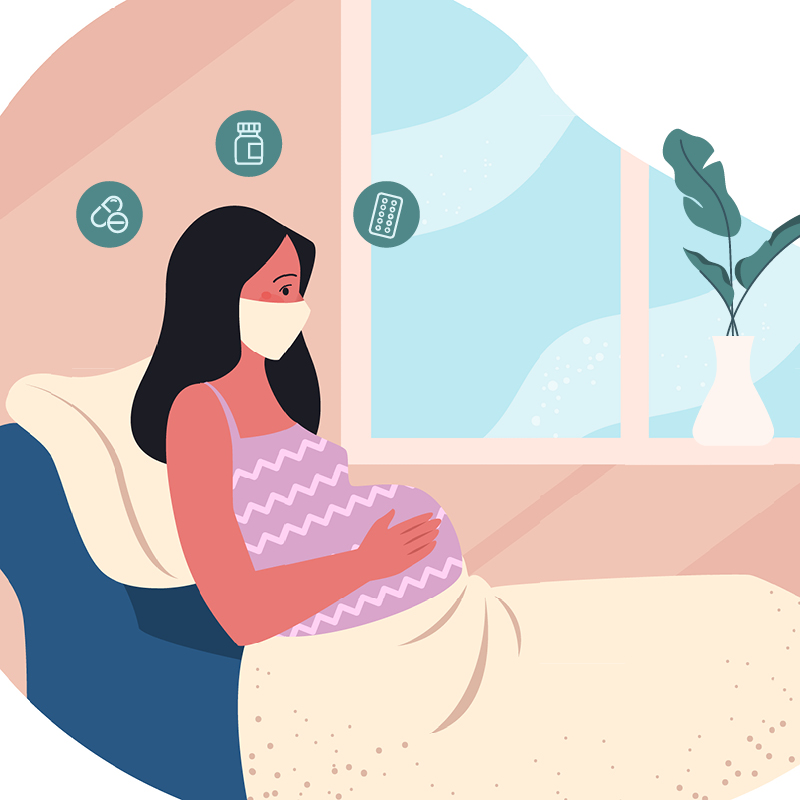The experience of childbirth can be an incredible one – but also very hard on the delivering mother’s body. During this time, a significant amount of stress is put on the muscles, nerves, and tissues in the pelvic region. Because of this, injuries are common – but not untreatable.
To get a better perspective on this pain and its healing, Michelle Chin, MD, an OBGYN specialist with Rochester Regional Health, explains these traumas and how they can be treated.
Defining pelvic floor trauma
The pelvic floor is composed of muscle fibers and connective tissue that support the organs and muscles underneath the pelvis. Also called pelvic floor disorders, pelvic floor trauma stems most often from vaginal births.
Some of the areas where women may be experiencing discomfort or pain following birth include:
- Pelvic floor muscle
- Bladder
- Rectum
- Anal sphincter
- Vaginal opening
“The birth of a child is a beautiful and life changing event, but it can have life-long consequences due to the pelvic floor trauma sustained," Dr. Chin said. "The strain on the pelvic floor muscles during labor and delivery along with potential obstetrical lacerations can have significant effects."
Common injuries & conditions
Nearly 45 million women in the U.S. will live with pelvic floor trauma by 2050, according to some studies. Symptoms from these injuries may start to show up immediately after childbirth, or may take weeks or months to develop.
Generally, these traumas can be placed into four main categories.
Urinary incontinence
When the tissue surrounding the bladder and urethra are weakened or injured, this can lead to difficulty controlling the release of urine.
Some women experience this when sneezing, laughing, exercising, or coughing. This is a widely recognized outcome for women who have gone through childbirth.
Fecal incontinence
Similar to urinary incontinence, this happens when the muscles and tissue surrounding the anus weaken and cannot control stool from leaving the rectum.
As a result, this may lead to uncontrolled flatulence, soiled undergarments, or the sudden urge to defecate at a time when you may not have access to a toilet.
Pelvic organ prolapse
This type of prolapse occurs when an organ begins to sag or drop from their usual anatomical position over in the pelvic region.
Organs that do this are the uterus, cervix, bladder, and rectum. They can all press into and on the vagina. The feelings may be more prominent during exercise, physical activity, or straining for bowel movements.
Sexual pain
This can happen with women who have scar tissue near the opening of the vagina after natural tearing or an episiotomy during delivery. Women who experience a prolapse may also fall into this category.
These types of symptoms can not only be physically uncomfortable, but also emotionally and mentally taxing.
“While these injuries and conditions are common among women and may be embarrassing to talk about, they do not need to be part of your everyday life,” Dr. Chin said. “We are here to treat you in whatever stage of pain or discomfort you may be in.”
Treatments to seek out
If you have already gone through childbirth and are living with pain or discomfort, providers at the Rochester Regional Health Pelvic Health Center will work diligently with you to identify treatments and therapies to help you heal and reduce the risk of experiencing a future injury.
There are a wide range of non-invasive treatments, as well as surgical measures, available for women. Each one will be carefully discussed with you so that you can choose the option that make you the most comfortable.
Physical therapy
There are many exercises you can do to strengthen your pelvic floor muscles and better support your organs. Some are simple exercises you can do at home, while others may require assistance from a trained physical therapist.
Pessaries
Pessaries are small, soft devices that are inserted into the vagina to help prevent the organs from prolapsing out. They can also be used to support the bladder neck to decrease stress incontinence.
Surgery
If non-invasive or minimally-invasive methods of treatment are not achieving the results you want to see, surgery may be the next option.
Procedures may include bladder sling surgery, a midurethral sling, or prolapse repair with or without a hysterectomy. Prolapse repair can be done vaginally or abdominally. If a patient chooses to do prolapse repair abdominally, we often use the DaVinci for robotic laparoscopic assistance. If these are being considered, your doctor will consult with you about your options and your risk factors before moving forward with a surgery.
“From urogynecology to physical therapy, a range of specialists are ready to help you get the help you need to have a successful outcome,” Dr. Chin said. “We have numerous treatment options and individualized care to help you live your life to the fullest.”









